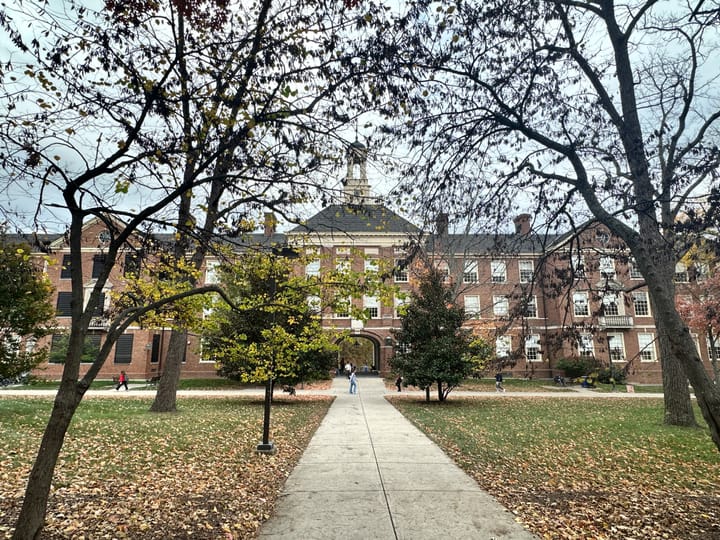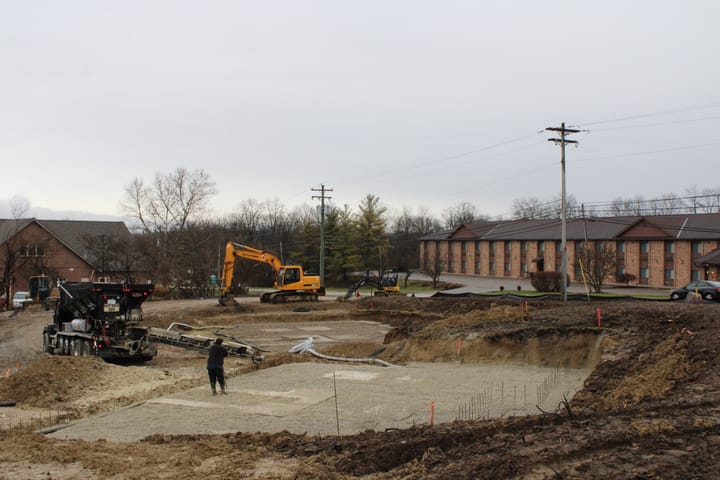Miami University survey finds Trump up by three points in final days of election
A recent survey of more than 850 registered voters in Ohio found Donald Trump leading Kamala Harris by three points in the state. In the senate race, incumbent Democrat Sherrod Brown maintained a narrow lead over Republican challenger Bernie Moreno.

Students at Miami University assisted in a survey of Ohio voters which found former President Donald Trump leading Vice-President Kamala Harris by three points among registered voters.
The survey, conducted Oct. 28-30, found Trump with 49% support compared to Harris' 46% support. In the Ohio senate race, which could decide control of the U.S. Senate, incumbent Democrat Sherrod Brown leads Republican challenger and Trump-endorsed candidate Bernie Moreno 48% to 46%.
Among respondents who said they would vote, Trump led Harris 50% to 47%, while Brown's lead shrank slightly, with 48% of respondents saying they'd vote for him compared to Moreno's 47% support.
The results of the survey, sponsored by Miami's Center for Career Exploration and Success and the Menard Family Center for Democracy, show a closer presidential race than other state polls. The FiveThirtyEight polling average for Ohio shows Trump up by 8.6 points, down slightly from his 9.1-point lead in early September. The state is not among the seven which analysts have identified as the key swing states in this presidential cycle.
The Miami University poll also asked respondents about Issue 1, a ballot initiative which would amend the state constitution to create a new redistricting process and citizen redistricting commission. Among respondents who said they would vote, 46% said they would vote yes, while 44% said they would vote no and 9% said they were unsure. The poll has an estimated 5% margin of error.
Another surprising poll was also released this weekend. A Des Moines Register/Mediacom Iowa Poll led by J. Ann Selzer found Harris up by three points in the state which Trump won by more than eight points in 2020. The final Des Moines Register poll was within three points of the final margin in both 2016 and 2020.
Kevin Reuning, an associate professor of political science, and Monica Schneider, a professor of political science, helped their students design and field the Miami survey. Reuning said polls are more accurate when aggregated together, and outliers should be expected. While the Miami and Selzer polls could indicate late changes in voter mindsets, Reuning said, people shouldn't take the results of polls as facts which can predict outcomes.
"It might indicate that there are these changes happening," Reuning said. "We also could have just both rolled the dice and had some bad draws."
Throughout the rest of the semester, Reuning said his students will analyze the demographic data and additional questions included in the survey to find more information about the Ohio electorate.
"To me, the most useful part of polls and surveys is how you can look at variation across groups and things like that," Reuning said. "That to me is more interesting than just, 'What's going to happen tomorrow?' My advice for a lot of people at this point is, if you can tell someone what the actual polling margin is in multiple states right now, then you need to just relax a little bit."
Adrian Dooley, a junior Miami student with majors in data analytics, political science and data science and statistics, is in Reuning's class and helped to create and field the survey. He plans to go into election polling and forecasting after graduating. Dooley and the 39 other students in Reuning's class each signed up for one-hour shifts last week to reach out to Ohioans via text to take the survey online.
"Everything was standardized really, so there's not much opportunity for any certain students to skew results," Dooley said. "We got to see all the replies come in ... Every time you clicked 'Text,' [the system] would send a new text."
Dooley said he and the other students could answer basic questions from respondents with scripted responses and would forward anything more complicated to the professor. In total, Reuning said they reached out to roughly 40,000 Ohioans, and more than 850 ultimately participated.




